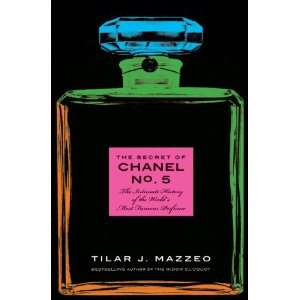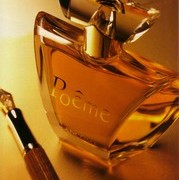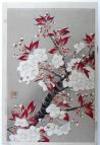“The line between legend and history, however, is wonderfully—and perplexingly—malleable, Much of what is told and retold as conventional wisdom about the spectacular rise of Chanel No. 5 and its transformation into an international byword for luxury is the stuff of half-truths, confusion, collective fantasy, and sheer invention. Sometimes, the truth that those legends obscure is more fantastic than any fiction,” writes Tilar J. Mazzeo in her book The Secret Of Chanel No. 5: The Intimate History Of The World’s Most Famous Perfume.
Several years ago, I happened to be in possession of a vintage bottle of Rallet No 1. I had heard many stories that this perfume, created by Ernest Beaux was a favorite among the Russian imperial family before the 1917 revolution and that it was subsequently reborn as the world’s greatest perfume, Chanel No. 5. It all sounded fascinating, incredible and far-fetched. Therefore, when Philip Kraft, a talented fragrance chemist from Givaudan, proposed to analyze the fragrance and to conduct a thorough investigation into this legend, I was thrilled. We exchanged plenty of emails, translated historical documents, and mailed fragrance samples to each other. The information uncovered was sometimes downright disconcerting—one diary account presented Beaux as a war prison interrogator, another hinted at Coco Chanel’s Nazi connections. However, I could not carry the project with Philip to the end as I started my training with International Flavors & Fragrances. Fortunately, Philip continued his thorough investigation with Christine Ledard and Philip Goutell. Their discoveries (along with the reconstituted formulas for Rallet No1 parfum and eau de toilette as well as mysterious Mademoiselle Chanel No1) appeared in the superb article From Rallet No1 to Chanel No5 versus Mademoiselle Chanel No1, published in the October issue of Perfumer & Flavorist*.
Ever since then, Chanel No. 5 has been fascinating me more and more, and I could not have been more delighted to discover The Secret Of Chanel No. 5. As the title promises, it is a revealing account of Chanel No. 5, from its birth to its current status as an icon. The traditional secrecy of the fragrance business and Chanel’s own guarded attitude has led to a whole web of myths surrounding this fragrance especially since the upheavals that the world has suffered since the launch of No. 5 in 1921 destroyed much of the archival evidence. Yet, undaunted, Mazzeo sets out to untangle the stories, to learn what really happened and to explain how No. 5 became the icon we know it to be.
The supporting evidence Mazzeo uses to verify her account is impressive, as is the careful background research with which she documents her quest. Mazzeo’s bibliography gives an excellent reading list for anyone curious about Chanel and the world she lived in as well as fragrance on artistic and technical levels. Above all, given how much has been written about Gabrielle Coco Chanel over the past few decades, Mazzeo nevertheless manages to paint a portrait of the woman in a new light. She is clearly sympathetic to her subject, yet she does not hesitate to reveal the unsavory facets of her character. As a result, the account has a very balanced feel. Mazzeo’s treatment of the context in which Chanel operated is also very fair. By way of example, unlike most authors, she credits Paul Poiret as the first designer linking fashion and fragrance.
Mazzeo begins her story with Gabrielle Chanel’s upbringing at the Aubazine orphanage, where she was abandoned by her father in 1895. Mazzeo believes that Aubazine, pure and austere, became a secret code for Chanel, even though she avoided any mention of it later in life. “What she lived with always, however, were Aubazine’s smells. They were the bracing scents of order and severity… It was the scent of everything that was clean. Aubazine was a secret code of smell, and in the years to come it would be at the heart of everything she would find beautiful” (p.8). According to Mazzeo, the memories of Aubazine’s smells were the reason that the sparkling freshness of Ernest Beaux’s composition appealed to Chanel as much as it did.
We also learn about Chanel’s eventual rise to stardom in fashion, her relationships with men like Étienne Balsan, Captain Arthur Edward ‘Boy’ Capel and Dmitri Pavlovich Romanov, a man who introduced her to perfumer Ernest Beaux. Given how much detail Mazzeo includes when discussing the process leading to the creation of No. 5, the chapter on the actual creation of the fragrance feels somewhat anticlimactic. I wish we could get a richer portrait of Beaux, beyond his immediate involvement with Chanel. For one thing, No.5 was the product of his genius, perhaps even more so than Chanel’s. After all, as Mazzeo explains, it existed even before Chanel even decided to launch a perfume. In this light, Beaux’s appearance seems brief and I am left wanting more.
While I found that the personality of a true player in Chanel No 5 creation, Ernest Beaux, was underdeveloped, the main drawback of the book was its writing style. The narrative is set up in a detective story manner, reminiscent of Chandler Burr’s The Emperor of Scent–the conspiracy theories, the heavy foreshadowing of events, the suspense, which in this story are resolved somewhat anticlimactically. As a result, the bold extrapolations abound. “Coco Chanel’s brief career as a showgirl would also lead, circuitously but inexorably, to the creation of Chanel No. 5 perfume. And not just to its creation but also to the very particular scent that it would capture” (p.17.) This post hoc ergo propter hoc reasoning exists alongside the carefully researched aspect of the book (that actually contradicts some of these claims), and it is a strange pairing to say the least.
As the story develops, leading up to contemporary events, it loses its initial engaging quality. Perhaps it is only expected—as Mazzeo presents it, No. 5 is now a veritable icon, and even the specter of IFRA restrictions does not threaten its existence. It is a tale with a happy ending. Naturally, a story through the prism of a single consumer product would lead to some limitations and omissions, and some elements of the story tying the characters and No.5 together appear somewhat strained at times. However, these are minor qualms given the amount of interesting information a curious fragrance aficionado can derive from the book. As I finished the book, the first thing I did was to reach for my bottle of Chanel No. 5 parfum, marveling once again at its power to inspire and mystify us to this day.
Tilar J. Mazzeo
The Secret Of Chanel No. 5: The Intimate History Of The World’s Most Famous Perfume
New York: HarperCollins (2010) 1st edition
hardcover, 281 pages
*From Rallet No1 to Chanel No5 versus Mademoiselle Chanel No1 by Philip Kraft, Christine Ledard and Philip Goutell is available from the Perfumer & Flavorist website.

















15 Comments
Helen: Excellent review! You’ve really piqued my interest in this book. I remember reading the article from P&F (I even bough the whole issue that month,) and it made me see No 5 in a totally new light. Excited to read the book now. November 8, 2010 at 9:12am
Meliscents: I recently picked up a full, sealed bottle of Rallet No. 1 at an antique store and was amazed at how similar it was to Chanel No. 5. It’s missing the sparkle and depth of No. 5, but you get the feeling that it may have been a starting point for the creation of this legendary perfume. November 8, 2010 at 10:35am
sweetlife: Well, V., the book sounds great, but mostly you’ve succeeded in whetting my appetite for a project of your own. I supposed I will have to settle for a gorgeous perfume, first… 😉 November 8, 2010 at 11:42am
Anya: Thanks for this review, V. I am ambivalent about learning all the “secrets” of the development of Chanel No. 5, my favorite perfume since age 6. For me, opening the bottle transported me to another world, which is the goal of perfume on some level. With our 21st Century obsession with the perfumer and the history, there is a bit of the magic lost with the details of the lives of the mere mortals who created such magic. Still, there is a public wanting for such information, and the writer appears to have done a very good job by your account. November 8, 2010 at 9:33am
Anya: to correct: writers, not writer. November 8, 2010 at 9:34am
Victoria: Helen, Philip Kraft’s article is great, and Mazzeo definitely relies on it in her account, supplementing it with additional interesting research. Let me know what you think of the book. November 8, 2010 at 10:26am
Victoria: Anya, to be honest, as I finished reading the book, No 5 felt even more mysterious to me! I actually would have liked to know more about the perfumer himself. His appearance in the story feels so fleeting. November 8, 2010 at 10:28am
Victoria: Yes, isn’t it fascinating? It is as if you are smelling a sketch of No5. Yet, the genius of Beaux is quite evident in the structure of the fragrance. It evolves in a very unpredictable manner, and it is hard to believe how old it is. Its core feels very modern. November 8, 2010 at 10:48am
Lynn Morgan: Fascinating. Coco Chanel is an idol of mine, and all the aspects of her life, even the troubling ones like how she spent WW II are intriguing. However, I happen to think Chanel No. 5 is one of the most over-rated perfumes in the world. I know I am in the minority opinion here, but to me it’s just a nasty, chemical pong. Chanel 22, Chanel Gardenia anjd Chanel 19 are much better. Please don’t bother to flame me- I know I have spoken blasphemy. November 8, 2010 at 6:42pm
athabasca: Notes from a Lurker: Ok, I have an advance copy of this book and I so hated the writing that although I find the subject deeply interesting it was nigh on unbearable to read. The author hovers between two styles: an academic treatise (footnotes filled with information better worked into the story) that seems to be jousting with off-screen naysayers ready to doubt her scholarship; and a potboiler full of heavy foreshadowing (dum, dum, DUM) that makes some wild claims about the influence of soap and architecture, for example, on Chanel perfumes. At a distance, it is interesting, but oy. If only she had picked one and gone with it. The cover is great. Thanks Andy Warhol! November 8, 2010 at 9:46pm
Victoria: A, you are too kind!
On the other hand, I cannot wait for your project to be ready! 🙂 November 8, 2010 at 7:25pm
Victoria: Lynn, you see, as long as one has such strong opinions on scent, it is all that matters. It is worse when one encounters one bland thing after another that leaves no memory, no emotion (positive or negative.)
One of the reasons I loved the book was that it managed to present Coco in a very interesting (and new to me) light. November 8, 2010 at 7:29pm
Victoria: A, oh, I just realized that thanks to some glitch in my html, I am missing a whole paragraph to the review about the writing style. That is what happens when posting from a blackberry! I will edit shortly, but I have to say, yes, I agree with you. The heavy foreshadowing especially drove me nuts. I found the combination of academic quality of research and the thriller type narrative strange and ultimately not very convincing. The information that the book does present, however, makes me worthwhile, it is very interesting and new. November 9, 2010 at 8:55am
Olivia: Im reading it because of this article! November 13, 2014 at 7:05pm
Victoria: Hope that you’re enjoying it! November 14, 2014 at 1:35am